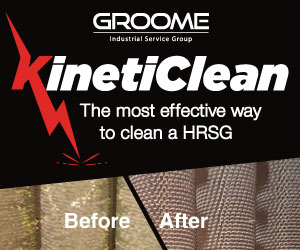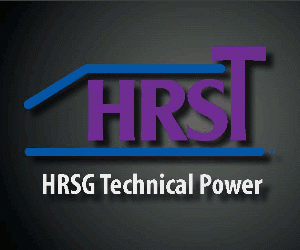The Siemens SGT5/6-2000E (V94.2/84.2) and SGT5/6-4000F (V94.3A/84.3A) fleets are among the world’s most successful gas turbines, having been continually upgraded over their respective lifetimes (39 years for the E-class engines, 26 for the F-class) to improve performance and help owner/operators remain competitive as power generators. Worldwide, about 1000 machines (50- plus 60-Hz) produced by the OEM and its licensees, are operating today.
The V Users Group serving the Western Hemisphere is relatively small. For example, the number of 60-Hz Dot 2 and Dot 3A units in the US account only for about 10% of the V engines worldwide. Siemens Energy Inc organizes the annual meeting of these owner/operators with help from users—including Scott Wright of PowerSouth Energy Co-op, J R McKinney of Arkansas Electric Co-op Corp, and Preston Walsh of Great River Energy.
Access Part I of this special report to learn from the experiences of your 50-Hz V colleagues in Europe, Asia, and the Middle East.
There were about a dozen presentations by Siemens at the 2019 meeting last September in Pittsburgh. The editors summarize here the content of the comprehensive engineering and modernization/upgrade presentations for each frame. The remainder, listed below, can be accessed through the Customer Extranet Portal (CEP):
-
- Asset performance management.
- Expanded scope solutions for total plant optimization.
- Fuel specific solutions.
- Advanced technology update.
- Brownfield engine exchange.
- Generator update.
- Controls and electrical update.
The 40+ slide engineering presentation on the V84.2 engine at the 2019 conference began with a review of key facts for the combined V94/84.2 fleet: Well over 400 units operating worldwide, 35% of owner/operators under an OEM long-term service agreement, more than 30-million equivalent operating hours (EOH), and 99.6% overall fleet reliability.
The takeaways from this chart: There’s a wealth of experience to benefit from when problems arise at your plant, provided you attend the annual user conference and build a network of colleagues to contact when help is needed; the aftermarket services business is competitive; and the fleet’s impressive reliability encourages upgrading engines, or purchasing new the latest model for plant expansion, when opportunities arise.
The next slide reinforced the long-term value of the SGT5/6-2000E to owners. It showed that the fleet continues to grow, nearly 40 years after its introduction in Waldheim, Germany, in 1981, and more than 30 years after the first units in the US began commercial operation in 1989 at the Hay Road Power Complex, Wilmington, Del. Fact: In the 2017-2019 period there were 28 new units and BEX (brownfield engine exchange) replacements—one-third in the 60-Hz market.
A BEX replacement enabled PowerSouth Energy Co-op’s McWilliams Power Plant in Covington County, Ala, to boost the output of its mid-1990s vintage SGT6-2000E(2) from 102 to 114 MW by swapping it out with a new late-model SGT6-2000E(8). Improvements in the engine’s gross simple-cycle efficiency from about 31% to 35% over the years made replacement more economically attractive than continuing to change parts and do regular maintenance upgrades. Plus, NOx emissions were reduced to 10 ppm from 13-16 ppm.
Major work on the BEX project, the first-of-its-kind in the US for the OEM, included the design/manufacture/installation of a new intermediate shaft between the turbine and generator, and modifications to the air-inlet house and exhaust diffuser—in addition to replacing the gas turbine, of course. The original generator remained as it was.
Siemens reported that it has done more than two dozen BEX projects worldwide and has several more in the works. Bear in mind that the concept is not unique to the V94/84.2 fleet. Projects completed and under development involve such engines as the V94.3A, V64.3, 501D5A, W701, 501FC, and 501FD3.
If you’re new to this fleet or haven’t kept up on the mods and upgrades to improve performance you might want to access this information on the CEP—especially if your plant is more than 10 years old. Over the last decade your plant’s requirements likely have changed with regard to dispatch schedule, emissions, power output (perhaps you can sell more electricity today than previously), etc, and new investment might strengthen your market position.
Si3D. One consideration might be re-blading the turbine with the OEM’s Si3D (Siemens innovative 3D) blades and vanes, which became available for 60-Hz service as the first decade of the millennium came to a close. These airfoils enable significant improvement in output and efficiency.
Initially, owners re-bladed the first two stages of the turbine to achieve a nominal increase in output of 5 MW, and an efficiency improvement approaching 1%. Given the excellent results, many owners re-bladed Rows 3 and 4 when those airfoils were made available, gaining another 2.5 MW and 0.5% efficiency. Today, about half of the V94.2 fleet (and 40% of the V84.2 fleet) is equipped with Si3D blading. All new SGT5/6-2000E turbines have Si3D blades and vanes.
RCIE. Knowledge gained in the conduct of more than a hundred Rotor and Casing Inspections and Evaluations on SGT5/6-2000E machines over the last 10 years was the next topic. The good news: Typically, no significant findings were reported fleet-wide for most rotor and casing components between 100k and 150k EOH. Siemens’ recommendations: NDE rotor components at 3000 starts; consult with the OEM’s engineers two years prior to the major inspection in the 123k-133k EOH timeframe regarding the optimal maintenance schedule for future operation.
A couple of case histories were presented on actions taken to address inspection findings; an insightful bar chart showed very few key compressor and turbine components (discs, tie rods, etc) have been replaced across the baseload fleet because of indications revealed during RCIEs, which began in 2009. In addition, cutaway color-coded drawings allowed attendees to see which baseload-engine parts typically can run up to 200k EOH, and beyond, with proper inspection and maintenance, those recommended for replacement, and those requiring a unit specific assessment.
For RCIEs performed on peaking units at 3000 starts, the goal is to make the necessary improvements to enable operation for up to 6000 starts. Replacement of compressor vane carriers 1 and 2 with GG25 material, and turbine discs 3 and 4 with X12 material, are recommended for about two-dozen North American engines. But final go/no go decisions depend on unit-specific assessments. Replacement of all rotating compressor blades also is recommended by the OEM at 3000 starts.
Tile holders for all engines in this frame should be replaced at between 100k and150k operating hours.
Wet compression is a proven technology for boosting gas-turbine output on hot days and Siemens has more than 70 systems installed worldwide on its large 50- and 60-Hz frames. A review of wet-compression experience on SGT5/6-2000E engines since 2003, with the fleet leader at more than 14k OH, provided the following two observations, among others:
-
- No pitting corrosion has been identified on any V94/84.2 unit, and no tendency to pitting corrosion is expected.
- Coating loss has been observed on the leading edge and pressure side of some units but corrosion has not.
Modernization and upgrade products scheduled for release in 2020 will continue to boost the capabilities of this frame and its performance. Many of these enhancements were discussed at the Pittsburgh meeting with respect to the 50-Hz machine which will host the first commercial deployments; 60-Hz applications to follow. Some of the products discussed include the following:
-
- Si3D+™ next-generation turbine blades and vanes for greater power and efficiency, and companion compressor bearing to accommodate the higher thrust load with the new airfoils. Think of the new bearing as availability/reliability insurance.
- New hot-ambient compressor design to extract maximum performance for engines located in warm climes—such as Africa, Middle East, and Bangladesh.
- Reduction of cooling air required in the combustion chamber brings NOx emissions below 10 ppm.
- Ultra-fast starting.
- Enhanced fuel flexibility, including hydrogen.
41k EOH. The value of Siemens’ 41k EOH Maintenance Concept received air time. Owner/operators that have not yet implemented 41MAC (shorthand lingo) might want to review its benefits. In brief, it involves the replacement or modification of key turbine components to extend their lifetimes and reduce lifecycle costs. What’s involved includes new coatings for turbine blades, advanced inner casing and mixing chamber design, plus the HR3 burner and flame-tube modification.
41MAC can be combined with other modernizations—such as firing-temperature increase and Si3D blades and vanes—to boost overall performance.




